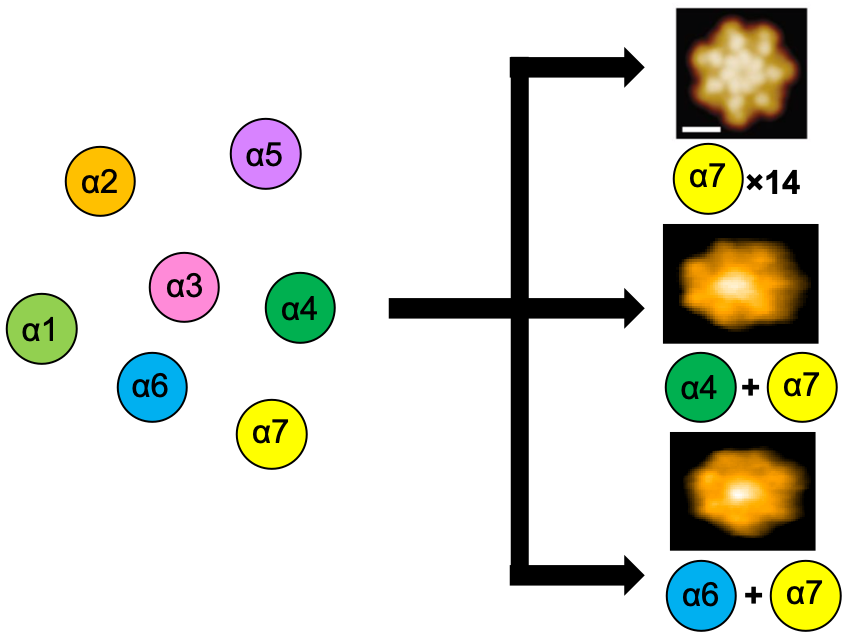June 09, 2020
Elucidation of the assembly mechanism of the proteasome, a ring-shaped protein complex
SOKENDAI Publication Grant for Research Papers program year: 2019
SEKIGUCHI Taichiro, Molecular Science
Mutational and Combinatorial Control of Self-Assembling and Disassembling of Human Proteasome α Subunits
Journal: International Journal of Molecular Sciences publish year: 2019
DOI: 10.3390/ijms20092308

We revealed that combination of proteasome α subunits that can assemble into ring-shaped structures is quite limited; atomic force microscopy images of proteasome α rings constituted by fourteen α7 subunits (upper), α4 plus α7 (middle), and α6 plus α7 (lower).
The brief description of my research
About 20% of human body consists of proteins, which exert various cellular functions, such as digesting food and maintaining cell homeostasis. In general, one protein is responsible for one function, and higher functions are created through complex formation of a series of proteins. Protein complex formation is a highly regulated process, and they can function only when each component, called "subunit", is correctly arranged at its correct positions. The proteasome is one of the protein complexes, and it degrades unnecessary proteins in cells. Assembly of the proteasome is initiated by formation of α ring as a base in which seven structurally similar but different subunits are arranged in a particular order.
In this study, we focused on the mechanism of how the α subunits are correctly assembled during the proteasome formation. By introducing site-specific amino acid mutations of the specific α subunit, we created artificial ring-shaped protein complexes in which α subunits are arranged in a different manner from natural α ring. We revealed that proteasomal ring-shaped complexes can be formed by very limited combination of specific α subunits among seven subunits. Furthermore, we investigated three-dimensional structures of the artificial α-ring, and found that ring-shaped complex formation can be mediated by not only the local interactions between the subunit interfaces but also specific combinations of seven α subunits to complete ring architecture.
- Title of the journal: International Journal of Molecular Sciences
- Publication date: 9 May 2019
- Title of the paper: Mutational and Combinatorial Control of Self-Assembling and Disassembling of Human Proteasome α Subunits
- Names of the authors: Taichiro Sekiguchi, Tadashi Satoh, Eiji Kurimoto, Chihong Song, Toshiya Kozai, Hiroki Watanabe, Kentaro Ishii, Hirokazu Yagi, Saeko Yanaka, Susumu Uchiyama, Takayuki Uchihashi, Kazuyoshi Murata and Koichi Kato
- DOI 10.3390/ijms20092308
Taichiro Sekiguchi, Functional Molecular Science
